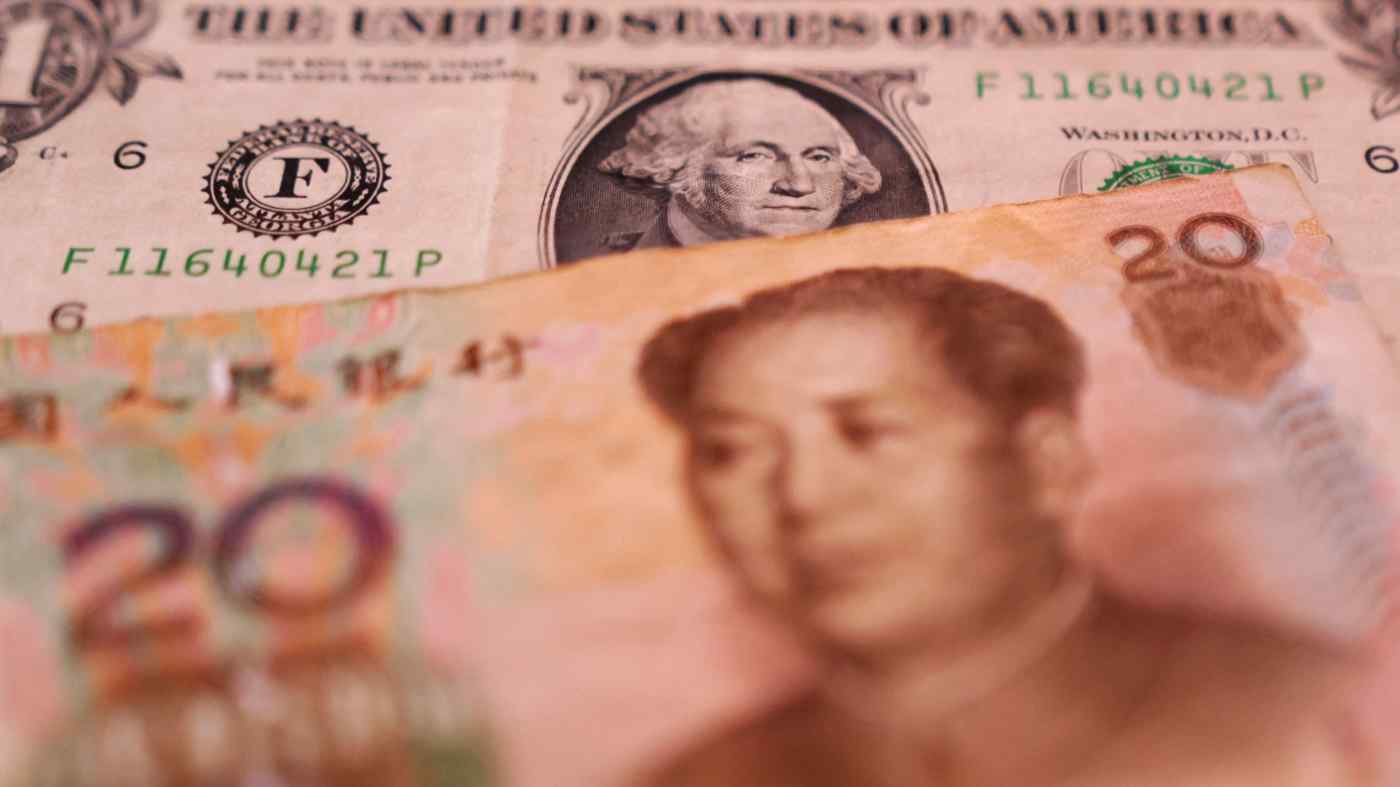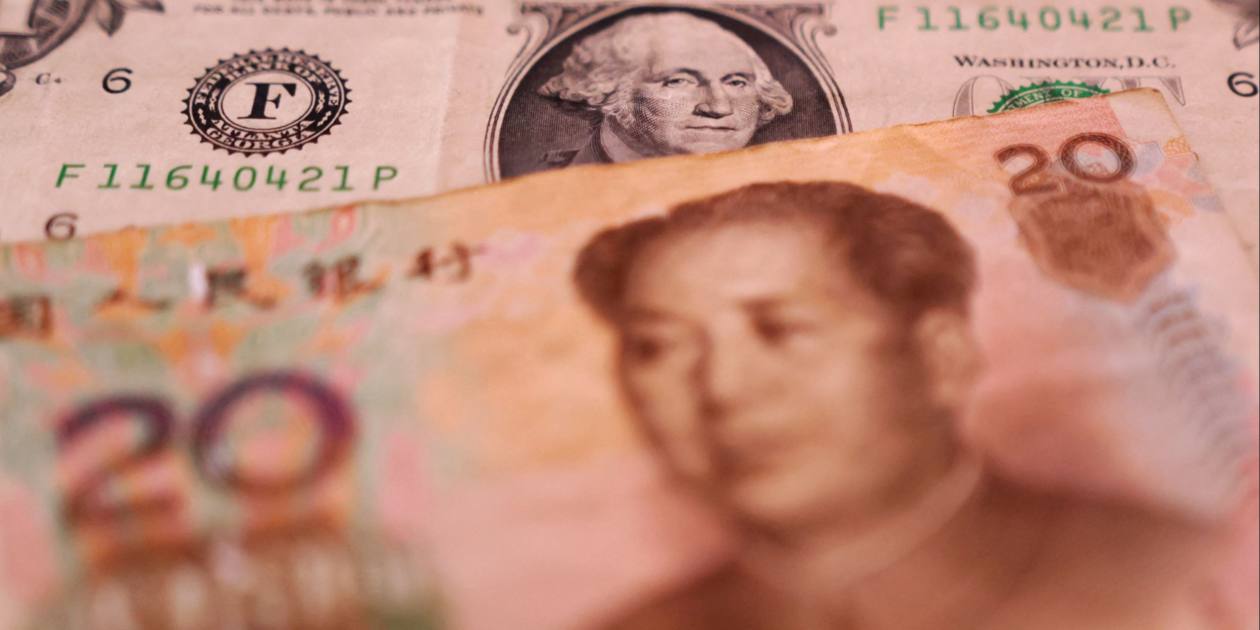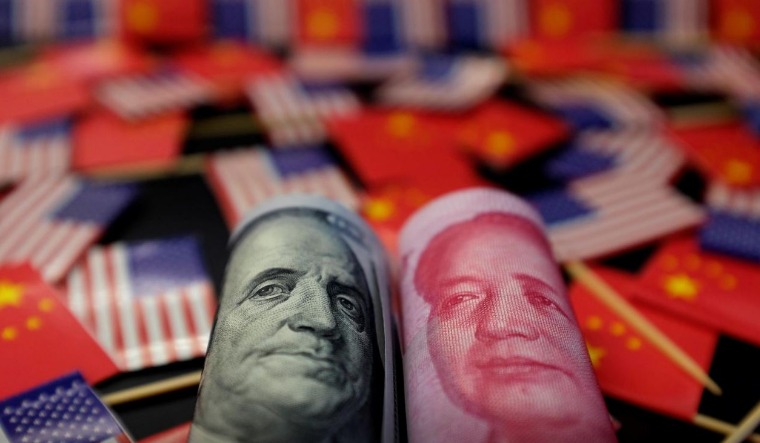beijingwalker
ELITE MEMBER

- Joined
- Nov 4, 2011
- Messages
- 65,191
- Reaction score
- -55
- Country
- Location
Yuan exceeds dollar in China's bilateral trade for first time
April-June figure driven by capital market liberalization and Russian trade
The yuan was used in 49% of China's cross-border transactions made by companies and institutional investors in the April-June quarter, topping the dollar's share for the first time. © Reuters
NORIYUKI DOI and SAKI AKITA, Nikkei staff writersJuly 24, 2023 21:04 JSTUpdated on July 25, 2023 01:24 JST
SHANGHAI/TOKYO -- The yuan was used in 49% of China's cross-border transactions last quarter, topping the dollar for the first time, a Nikkei analysis shows, mainly due to a more open capital market and more yuan-based trade with Russia.
Nikkei looked at international trade by companies, individuals and investors based on currency, using statistical data from the State Administration of Foreign Exchange of China. Nikkei's compilation does not include yuan-based settlements for trades and capital transactions that do not involve China as a counterparty.
The Society for Worldwide Interbank Financial Telecommunication, better known as SWIFT, reports that as of June the dollar's share is the largest globally at 42.02%, including trades between countries other than China. The yuan represented 2.77% and ranked fifth overall after the euro, the U.K. pound and the Japanese yen.
The yuan's share of global payments remains small compared with the size of China's economy, but is up from 1.81% about five years ago. Bilateral payments, backed by China's economic influence, have gradually expanded its foothold.
Cross-border settlements in the Chinese currency totaled 42.1 trillion yuan ($5.85 trillion) in 2022, the People's Bank of China reports. Capital transactions accounted for 31.6 trillion yuan, or about 75%, with current-account transactions such as trade making up the rest.
Yuan-denominated international payments last quarter grew 11% on the year to $1.51 trillion, while dollar payments shrank 14% to $1.4 trillion, the first quarter in which the Chinese currency pulled ahead in data going back to 2010.
China first allowed trade payments to be settled in yuan in 2009. This included settlements for freight, services and current account transfers, as well as capital transaction settlements, including for stocks and bonds.
China's opening of its capital markets and a push away from the dollar in trade have been key factors in the shift toward the yuan.
The Chinese government has opened the door for foreign investors to trade in yuan-denominated stocks and bonds via Hong Kong, with the Stock Connect program that launched in 2014, followed by Bond Connect in 2017. Similar links for exchange-traded funds and interest rate swaps debuted in 2022 and this year, respectively.
On the trade side, Russia has used the yuan more -- including for Chinese purchases of its oil -- since Western sanctions imposed in response to Moscow's invasion of Ukraine last year cut it off from dollar and euro payment networks. The Chinese currency made up a record 39% of total volume in Russia's foreign exchange market in March, the Russian central bank says.
Beijing has signaled it looks to push harder to expand the yuan's role in cross-border payments.
Efforts to encourage international use of the currency stalled after a 2015 devaluation unintentionally roiled markets. But President Xi Jinping said at the Communist Party congress last October that the yuan's internationalization would be promoted "in an orderly way," heralding a more proactive approach than the previous "steady and prudent" phrasing.
Beijing is inking bilateral agreements to this end. China and Brazil, which counts the Asian nation as a major soybean market, reached a deal in March enabling direct exchanges between the yuan and the Brazilian real without using the U.S. dollar as an intermediary. Argentina said in April it would switch from dollars to yuan for paying for imports from China.
Many emerging economies seek to reduce their dependence on the dollar, and Washington's leveraging of the greenback's dominance for sanctions against Russia has provided further motivation. The yuan stands to benefit from this shift.
This could spur currency decoupling or the formation of currency blocs, with big democracies continuing to use the dollar while China and countries with close political or economies ties to Beijing move toward the yuan.
China also looks to use its immense buying power to put a dent in the dollar's grip on commodity markets. State-owned China National Offshore Oil Corp. (CNOOC) and France's TotalEnergies in March completed China's first yuan-denominated purchase of liquefied natural gas.
Broader international use of the yuan has been hindered by tight controls on exchanging the currency and moving it in or out of the country, intended to prevent big market swings. Some observers expect Beijing to ease these restrictions gradually to strike a balance between stability and usability.

Yuan exceeds dollar in China's bilateral trade for first time
April-June figure driven by capital market liberalization and Russian trade


